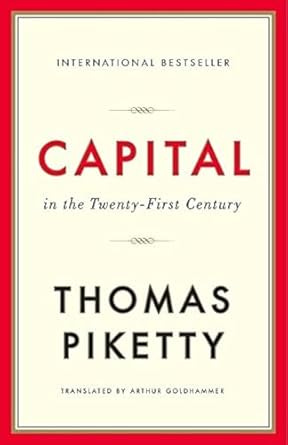“The distribution of wealth is ultimately a political choice, not simply an economic inevitability.”
Capital in the Twenty-First Century by Thomas Piketty is a groundbreaking exploration of the history of wealth distribution and inequality over the past few centuries. In this comprehensive work, Piketty examines the evolving relationship between capital and income, tracing how wealth has accumulated over time and the consequences for economic disparity. The book provides in-depth insights into the mechanisms that have driven wealth inequality, from industrialization to globalization, and offers a critical analysis of the challenges that modern societies face in managing these economic disparities. With its clear presentation of complex economic concepts, Capital in the Twenty-First Century is a must-read for anyone looking to understand the forces shaping the global economy today.
Through meticulous research and detailed historical analysis, Piketty proposes a new economic framework to address inequality and wealth concentration. He argues for progressive taxation, wealth redistribution, and other policy reforms to ensure a fairer distribution of wealth. This thought-provoking book has sparked debates among economists, policymakers, and the public, making it a key contribution to ongoing conversations about the future of capitalism and economic justice. Piketty’s work challenges us to rethink the role of capital in the 21st century and its impact on society at large.
5 Key Lessons from the book:
Wealth concentration drives inequality: Throughout history, wealth has been concentrated in the hands of a small elite, which has led to economic and social inequality. Piketty explores how different historical periods have seen varying levels of inequality based on the relationship between capital and income.
The return on capital exceeds economic growth: Piketty argues that over time, the rate of return on capital (such as profits, dividends, and interest) often exceeds the rate of economic growth, leading to a concentration of wealth that benefits the rich.
Historical context matters: By examining wealth distribution over several centuries, Piketty demonstrates how historical events, such as wars and economic crises, have temporarily reduced inequality, only for wealth to accumulate again during periods of stability.
The role of education and public policy: Piketty emphasizes that public policies, including education and social welfare systems, play a significant role in shaping wealth distribution. He advocates for progressive taxation and policies to reduce wealth concentration.
The global dimension of inequality: The book examines how globalization has contributed to wealth concentration on a global scale, affecting not only individual countries but the global economy as a whole.











